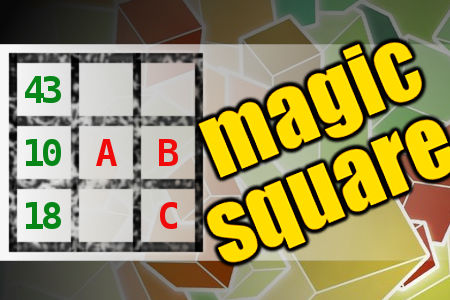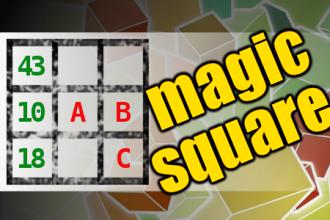MAGIC SQUARE: Calculate A*B+C
The aim is to place the some numbers from the list (6, 8, 10, 16, 18, 20, 43, 45, 47, 49, 66) into the empty squares and squares marked with A, B an C. Sum of each row and column should be equal. All the numbers of the magic square must be different. Find values for A, B, and C. Solution is A*B+C.
7 short Jokes for the Weekend's Approach
What do clouds wear underneath their pants?
Thunderwear.
What’s the leading cause of dry skin?
Towels.
He says “Doc I have been having really strange dreams for the last month”. Doc asks “Ok. What are the dreams?”. Bloke says “It’s like there is a football World Cup going on. Every night I see a football match but with donkeys! It’s driving me crazy! That’s all I think about all day”.
Doc smiles, thinks for a while, and says “Ok. Here is a prescription. Take 2 pills tonight before sleeping and you won’t have any of those dreams any longer.”
Bloke thanks the doctor profusely, gets up and walks to the door. He pauses, turns around and asks the doc “Doc if it is ok, can I start the medicine from tomorrow night?”. Doc looks puzzled and asks him “Why? Why not tonight?”. Bloke looks down and whispers “Tonight is the final”.
What’s your net worth?
However many fish it catches that day!
Before going away the neighbours gave me a spare key to feed their cat.
Poor thing choked to death on it.
I told my neighbours they could eat whatever they wanted when they housesat for me.
Damn, I miss that goldfish.
Did you hear about the bartender that pushed his wife off a cliff? He made a Bloody Mary on the rocks.

